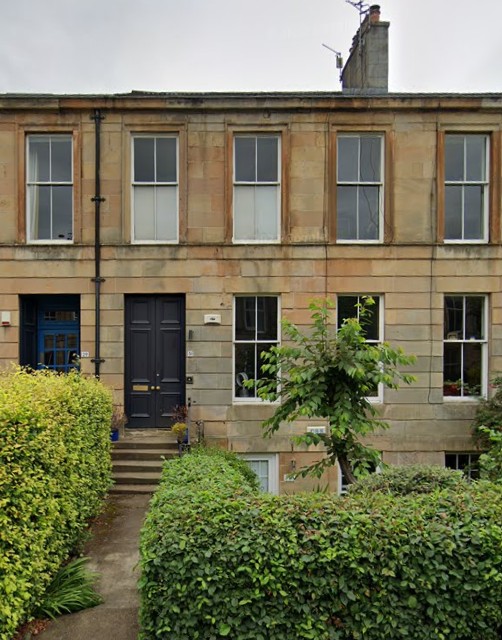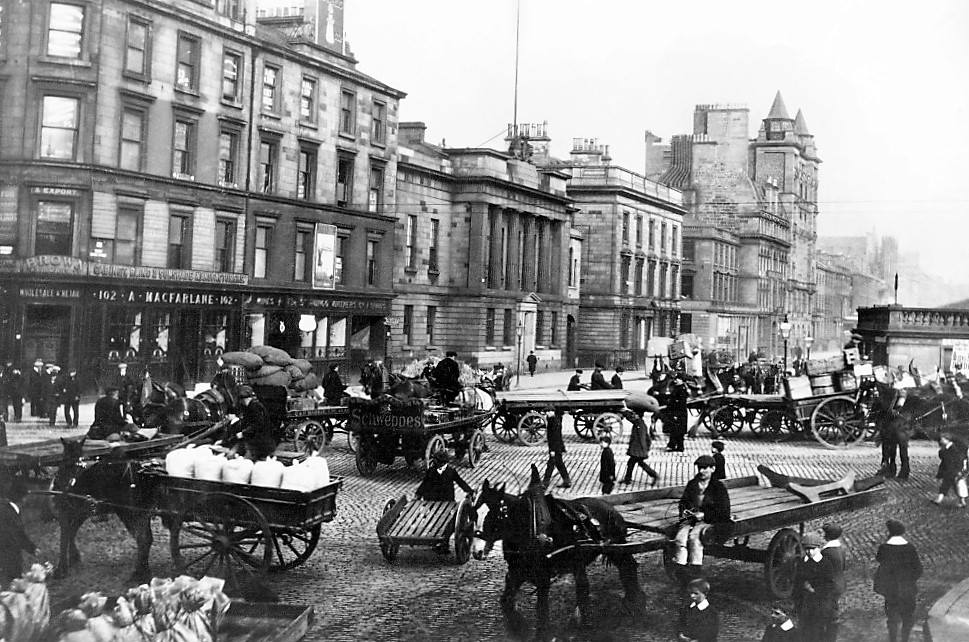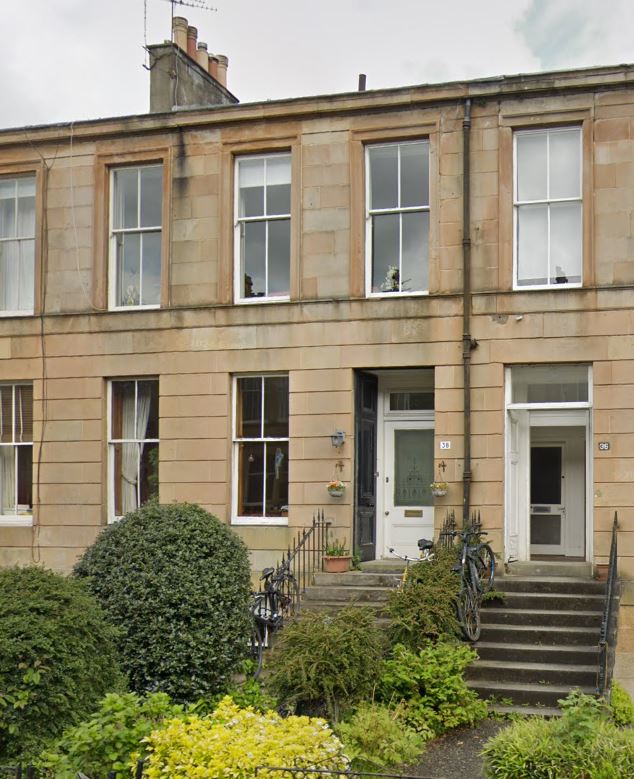Built by Daniel McNicol, first occupied 1865.
Andrew S McAllan
The first resident was Andrew Stewart McAllan. Andrew was born in Bonhill, near Dumbarton, to William Macallan, a calico printer. He married Margaret More Guthrie, daughter of another Bonhill calico printer, in 1850. Curiously the records show two marriages, one in Bonhill on 13 April, and then again the next day in the Gorbals – go figure. He lived in Great Wellington Street at the time (now Admiral St, behind the Old Toll Bar on Paisley Road West) and followed his father in the calico business, working for McAllan Brothers, calico printers of Renfrew Street.
Bonhill and the Vale of Leven in general were a major 19th century textile centre, the fast-flowing river providing water for bleachfields, where newly woven cotton (perhaps from Lanark mills) was laid out in the sun for months to bleach. Later the process was accelerated with cheimicals such as sulphuric acid and moved indoors. The fabric was then block printed to produce calico. The McAllan brothers, Andrew and John, appear to have owned the Dillichip Works at Bonhill, though they suffered financially in the early 1860s and were sequestrated. In 1866 the Dillichip Works were acquired by Sir Archibald Orr-Ewing, who had consolidated many of the works in the area, and went on to become a millionaire, MP and Baronet . Some get luckier than others.






Recent Comments